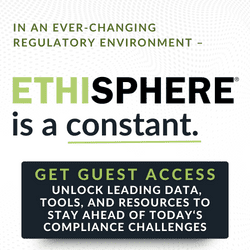An “early mover” is a firm that quickly recognizes a unique opportunity or risk in the marketplace and uses that knowledge to evaluate its options either before anyone else or along with other firms that likewise recognize the significance of what’s developing. Early movers have the advantage of time, with more decision-making options before market shifts invalidate critical assumptions underlying the strategy.
Failure to attain “early mover status,” as we’ve defined it, can be fatal in today’s global business environment. Therefore, boards and executive management should ensure their companies are focused on the attributes that make for early mover status and implement an early warning capability that can make a difference in creating and protecting enterprise value.
Don’t Confuse Early Movers with First or Second Movers
Our use of the “early mover” distinction is broader than the traditional focus on “first-mover advantage,” as that advantage typically refers to the initial significant occupant of a market segment. A marketing concept, this advantage is often gained through technological leadership, entry into a space where there is room for only a limited number of profitable firms, and the creation of significant switching costs. When a first mover is not able to capitalize on its advantage, it leaves the door open for another firm to gain second-mover advantage.
There is a body of knowledge around first movers and second movers and the advantages and disadvantages of each. The transition from mainframes to minicomputers, from minicomputers and workstations to personal computers, and from personal computers to notebooks, tablets and iPads and all the developments associated with the digital technology revolution are illustrative examples.
While first movers are also early movers, it is not necessary to be first in order to be early. The game is about not being late. This context is broader, focusing on a wide range of opportunities and risks related to the ongoing validity of an existing strategy and business model, as opposed to entry into new markets.
The early mover concept, as we define it, relates to recognizing market shifts affecting the validity of an enterprise’s critical strategic assumptions and making conscious decisions on whether to act on them. Thus, the idea around an early mover is that it can include a second mover. The dichotomy we speak of is not first versus second. Rather, it is early versus late, where the market decides what late means.
Simply stated, the stakes of being an early mover can be as high as preserving the company’s right to play.
Today, we are witnessing disruptive change to business models and even entire industries through innovation. Whereas disruptive innovations may have once taken a decade or more to transform an industry, research shows that the elapsed time frame has compressed to half of that. More importantly, it continues to shrink, leaving very little time for reaction. Sustaining a business model in the face of digitally enabled competition requires constant innovation to stay ahead of the change curve. And eventually, the business model itself runs out of steam.[1]
Innovation touches many things. It dramatically improves quality, time and cost performance to create superior products and services to customers. It creates new markets, extends a product range or replaces products and services. It can be disruptive when it improves a product or service in ways the market does not expect, typically by lowering price significantly or designing a product or service that transforms the way in which the consumer’s needs are fulfilled. Most importantly, organizations can choose whether to initiate or react to disruptive change. The reality is that embracing change and the future with confidence is the only viable alternative to becoming a victim of the never-ending cycle and escalating speed of innovation.
In short, those companies that do not have the attributes of an early mover risk paying a steep price as the speed of business increases.
In defining the attributes of an early mover, we use three R’s – recognize, react and reflect. We discuss each of these attributes below.
RECOGNIZE Opportunities and Risks
An early mover quickly recognizes the opportunities and risks that matter by:
- Understanding the critical assumptions underlying the strategy;
- Applying effective scenario-analysis capabilities to evaluate situations arising from an event or combination of events that could invalidate one or more critical assumptions;
- Deploying competitive intelligence capabilities aligned with the vital signs evidencing that the scenarios of greatest concern are either developing or have occurred; and
- Distilling the results of the abovementioned steps in a timely manner and reporting on the insights obtained to decision-makers.
The focus of early movers is on strategic matters. All airlines moving in unison to raise prices is an operational matter, not a strategic matter. The pervasive decline of the housing market that precipitated the financial crisis is an example of a strategic matter. As we illustrate below, the timing in which financial services institutions recognized AND reacted to the forthcoming decline in housing before the crisis crested made a huge difference in terms of their reputation and standing within the industry today.
The pervasive “volume and speed” business model for lending that led to the subprime debacle precipitating the financial crisis was built on several key assumptions. One of the most important assumptions was that residential housing prices would not fall dramatically across all major U.S. markets.
Another assumption, acknowledged by a former chairman of the Federal Reserve, was that an unprecedented era of cheap money would not create an unstable market through unbridled, irresponsible risk-taking, because the sophisticated risk management capabilities within the financial services industry contributed to greater resilience of the largest financial institutions. The assumption was that the use of effective financial models for evaluating credit risk, a growing array of derivatives and more sophisticated approaches to measuring and managing risk would direct funds to the most profitable and productive uses.[2]
Looking back, both of these assumptions were flawed. Low interest rates, large inflows of foreign funds and lax underwriting standards created easy credit conditions during the years leading up to the crisis, fueling a housing bubble of massive proportions.
The dramatic growth in the shadow financial system (i.e., non-depository banks, investment banks, hedge funds, money market funds and insurers), as well as a surge of activity in the derivatives markets, helped fuel the credit and housing price explosion, leading to a building boom and eventually to a huge surplus of unsold homes. The onslaught of toxic, opaque mortgages exacerbated the problem. U.S. housing prices peaked and began declining in mid-2006. Defaults began to escalate as real estate values continued to decline. Financial institutions and investors were forced to write down the value of their subprime assets. The rest is history.
The combustible mix of excessive borrowing by households and risk-taking by Wall Street, dramatic breakdowns in corporate governance in many firms and the inability of policymakers to come to grips with the snowballing effect of dysfunctional behavior in the financial system they oversaw literally drove the U.S. and global economies into the ditch. Even if the financial models deployed by some firms were effective, they couldn’t overcome the breakdown in governance processes, as evidenced by unengaged boards, troubling imbalances in “heads I win, tails you lose” compensation structures and a lack of accountability for long-term shareholder interests.
Early movers are informed, meaning they obtain the right information at the right time and have the right tools in place to analyze information to support decision-making. While they may or may not be the first to react or may decide not to not act at all, they are usually the first to recognize a shift in markets and use that knowledge to provide options to decision-makers. Sometimes they may choose to defer a decision and learn from the actions of competitors, while they watch and exploit opportunities not seen by others. The important thing is they know what to watch for.
REACT to Significant Opportunities and Risks
An early mover reacts to the significant opportunities and risks it recognizes by:
- Fostering an organizational culture that facilitates consideration of the impact of changing market realities on critical strategic assumptions;
- Stimulating managerial intuition and ingenuity to translate information regarding the reality of altered strategic assumptions into actionable revisions for strategic and business plans; and
- Developing organizational resiliency, i.e., the ability and discipline to act decisively on revisions to strategic and business plans in response to changing market realities.
Having knowledge of an emerging opportunity or risk without undertaking a process to convert that knowledge into hard choices and actionable plans is as useless as having no knowledge at all.
Timely reaction is not as simple as it sounds. It implies the absence of “blind spots” spawned by such dysfunctional behavior as “tone at the top” issues; an uninformed board; a myopic, short-term focus on “making the numbers;” a lack of transparency; an unbalanced compensation structure or a warrior culture. A reward system based primarily on the volume of loans generated or new business, without regard for the quality of the loan portfolio or new business may result in the failure or inability to act even if management is aware of the risk of an unacceptable concentration of bad loans with financially distressed customers.
To this point of reaction, one CEO of a major global bank made the following statement to the Financial Times in July of 2007: “When the music stops, in terms of liquidity, things will be complicated. But as long as the music is playing, you’ve got to get up and dance. We’re still dancing.”
This observation implies this CEO’s a priori recognition of the risk. It also implies that he thought he knew how to time his bank’s exit relative to when the proverbial music stops. Of course, like timing the ups and downs of the stock market, that isn’t realistic. The end of a bursting bubble is always chaotic. That said, the CEO’s observation deserves more serious examination, because it captures a common problem in business.
At a directors’ conference several years ago, I was asked how a company can avoid taking risks its competitors are willing to take. This mentality reflects what I call the “follow the herd” dilemma, when no one knows when to stop if everyone else is making money. This mentality can be dangerous in a situation involving the huge volume of activity by mortgage brokers, lenders, mortgage insurers, investment banks, credit default issuers and institutional investors. Making money can be fun, but eventually the party ends if extreme risks are taken.
REFLECT on Failures to Recognize or React
An early mover learns from experience, especially in circumstances when it failed to either recognize or react, by:
- Encouraging admission of errors and learning from them, and
- Committing to continuous improvement, as evidenced by the ability to internalize lessons learned by converting them into process improvements.
As we described them above, the RECOGNIZE and REACT steps are hard. Often, companies do one or the other, but not both. That is why there are so few early movers in an industry (i.e., all players within an industry rarely move quickly in response to a changing business environment). Our definition of an early mover tends to differentiate firms. We have defined an early mover as an organization that understands its critical strategic assumptions, monitors those assumptions over time and is resilient when assumptions are no longer valid. However, it doesn’t always work out that way. Surprises hit the most reputable companies, and opportunities are missed. The question is, why?
REFLECT means that an early mover learns from experience, especially when it fails to RECOGNIZE or REACT. The speed and complexities of business will lead to occasional errors in judgment, either in terms of being completely surprised by unexpected events or recognizing that those events are possible or inevitable but failing to react on that knowledge. When that happens, companies aspiring to be early movers seek to learn from their mistakes.
Summary
While early movers take appropriate risks to be successful, they understand that changes in the business environment could alter the assumptions and risk/reward considerations management initially considered when deciding to take on those risks. In effect, early movers get it. They know that stuff happens and things change that can alter the fundamentals on which a business model is based. Companies with the awareness, resourcefulness, agility and discipline to position themselves consistently as early movers have a competitive advantage, leading to superior longer-term enterprise value performance. More importantly, they are more likely than their less aware and less nimble peers to survive a major market shift, and thus are well-positioned to face the future with confidence.
[1] Big Bang Disruption: Strategy in the Age of Devastating Innovation, by Larry Downes and Paul Nunes, Penguin, 2014.
[2] “Risk Transfer and Financial Stability,” remarks by Alan Greenspan to the Federal Reserve Bank of Chicago’s Forty-first Annual Conference on Bank Structure, Chicago, May 5, 2005.



 Jim DeLoach, a founding
Jim DeLoach, a founding 







